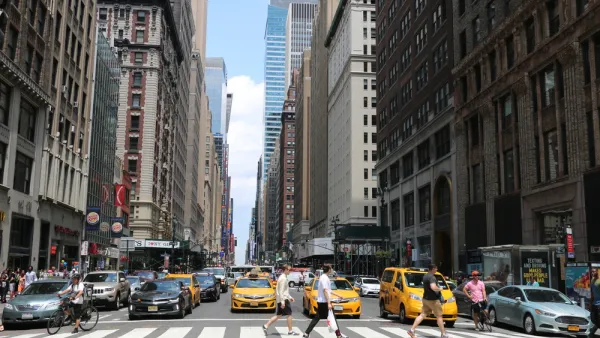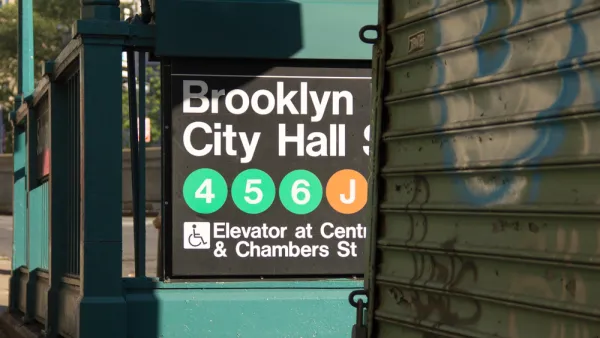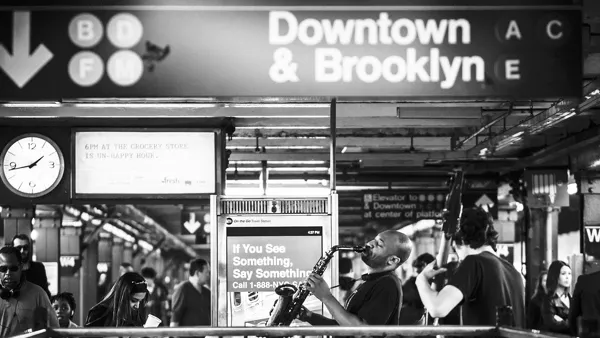The real estate intervened, and a proposed pied-à-terre tax became a mansion tax.

Ben Adler explains what happened to the proposed pied-à-terre tax that "would have generated $471 million a year, half of which would have come from just 280 homes worth more than $25 million," according to Wall Street Journal analysis. Analysis by New York City Comptroller Scott Stringer placed that number closer to $650 million a year.
According to Adler, that amount of funding was necessary to cover the gap between the potential revenue generating power of the city's proposed congestion pricing scheme, which could raise $15 billion over ten years toward an estimated $40 billion in required repairs to the MTA.
Instead of the proposed pied-à-terre tax, the New York Legislature and Governor Andrew Cuomo approved a tax that will have a broader impact but generate less funding. The 'mansion tax' will place a "surcharge on anyone buying a home in New York City for over $2 million and raising the real estate transfer tax on homes selling for more than $3 million." According to Adler, the Mansion tax will raise $365 million per year on average, an average subject to the whims of the real estate market in any given year.
Adler focuses much of the article on what was lost in the decision to change the pied-à-terre tax to a mansion tax; "the pied-à-terre tax would have killed three birds with one stone: raising revenue, revitalizing neighborhoods and reducing the obscene cost of housing."
For more on how the pied-à-terre tax became a mansion tax, see earlier news coverage by Vivian Wong.
FULL STORY: Pied-à-terre tax died for ridiculous reasons

Analysis: Cybertruck Fatality Rate Far Exceeds That of Ford Pinto
The Tesla Cybertruck was recalled seven times last year.

National Parks Layoffs Will Cause Communities to Lose Billions
Thousands of essential park workers were laid off this week, just before the busy spring break season.

Retro-silient?: America’s First “Eco-burb,” The Woodlands Turns 50
A master-planned community north of Houston offers lessons on green infrastructure and resilient design, but falls short of its founder’s lofty affordability and walkability goals.

Test News Post 1
This is a summary

Analysis: Cybertruck Fatality Rate Far Exceeds That of Ford Pinto
The Tesla Cybertruck was recalled seven times last year.

Test News Headline 46
Test for the image on the front page.
Urban Design for Planners 1: Software Tools
This six-course series explores essential urban design concepts using open source software and equips planners with the tools they need to participate fully in the urban design process.
Planning for Universal Design
Learn the tools for implementing Universal Design in planning regulations.
EMC Planning Group, Inc.
Planetizen
Planetizen
Mpact (formerly Rail~Volution)
Great Falls Development Authority, Inc.
HUDs Office of Policy Development and Research
NYU Wagner Graduate School of Public Service




























